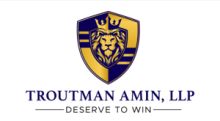So today is the Czar’s official last day in the office for the year!
Long time readers know I turn off the jets for the last couple of weeks of the year and simply relax with the fam and watch a yule log burn in my back yard. Its a tradition we call “solstice” and I look forward to it immensely each year.
Before I disappear for my long winter’s nap, however, wanted to round out Troutman Amin, LLP’s coverage of the big FCC ruling closing the “lead generator” loophole.
Ironically, the most enduring impact of that ruling will likely have nothing to do with the third-party lead generation that the Commission was targeting with the ruling.
So, setting the stage for anyone who hasn’t picked this up yet–the FCC just ruled that consumers can only give express written consent to a single “seller” at a time. Plus, calls must be “topically or logically” related to the transaction giving rise to the consent.
A “seller” is defined in the CFR as an entity that provides a good or service to a consumer.
Notice the word “entity” is singular. That’s very important for purposes of evaluating the rule change’s impact on first-party lead generation.
But first–what is first party lead generation and how is it different from third-party lead generation?
So a third-party lead is one generated by a publisher and sold to a seller (who is, somewhat confusingly, called a “buyer” in this context) either directly or through an intermediary network (called “lead aggregators”) who form digital marketplaces for such leads.
The best known example of a third-party lead generator is probably lendingtree.com. Folks visit the website to get offers from multiple banks, and their consent record is sold as a “lead” to these banks who then reach out to the consumer and compete for their business.
The FCC’s new ruling changes that business model pretty drastically. Instead of lendingtree.com now choosing which banks the consumer will hear from it must offer the consumer the option to choose banks he/she wants to hear from–and the consumer must select each bank individually. Kind of a pain, kind of a bore–but that’s the new world we live in.
But what’s first party lead generation?
Well imagine you’re hypothetical Bank X. Bank X is a publicly-traded company but you don’t buy shares in the actual bank operating subsisdiary, of course, you buy shares in Bank X’s holding company– Bank X Holding Corp.
Bank X Holding Corp. is corporate parent for wholly-owned subsidiary Bank X Holding, LLC, who in turn is parent for two-wholly owned sub-affiliate Bank X Holding Co.–which holds the IP rights for Bank X–and Bank X Operating, LLC–which is the operating arm of Bank X.
Bank X Operating, LLC is corporate parent to three operating subaffiliates including Bank X, NA–the deposit and community banking arm of Bank X–which is a 50% parent of Bank X Operating, LLC and Bank X Holding co. Bank X Operating, LLC is also parent to Bank X Financial Services and Bank X Financial Co., which provide business and personal loans respectively.
But Bank X Financial Co. also has two subaffiliates–Bank X Financial West and Bank X Financial, LLC–one to offer corporate, and the other to offer personal lines of credit and banking services related to the Bank X, NA. branded debit and credit cards. Then there’s Bank X Educational Services offering student loans, which is held 1/3 by Bank X, N.A., 1/5 by Bank X Financial West, and 7/15 by a joint venture between Bank X, Holding Co. and Bank Y, Holding Co.
Got all of that?
Good.
Consumer visits Bank X’s website and encounters a webform. Consumer asks to receive contact from “Bank X, and its affiliated entities” related to “student loan products.”
Who has the consumer consented to receive calls from?
Today the answer is simple– Bank X Financial Services can call the consumer. And if the form had said “deposit products” then Bank X, N.A. would call. And if the form had said “credit cards” then Bank X Financial, LLC would call. And if the form said something broader like “financial services that might fit your needs” then theoretically any of the operating Bank X subsidiaries might call, although Bank X would probably monitor that and use advanced metrics to determine which subsidiary ought to call and on which product given the consumer’s online profile.
Great, fine, no problem.
But watch what happens in the new post-NPRM world.
Same question– Consumer asks to receive contact from “Bank X, and its affiliated entities” related to “student loan products.”
Who has the consumer provided valid express written consent to?
Answer: nobody.
The form fails at the first step of the analysis because it does not provide consent to any specific seller to contact the consumer. Instead the consumer consented to hear from a Brand- Bank X. But Bank X is not an “entity.” It is, essentially, IP owned by Bank X Holding Co., but itself has no operations. Plus the form is per se invalid because it purports to gather consent not just for Bank X, but “affiliated entities.” So even if the form had said “Bank X Holding Corp.”–the ultimate corporate parent–the form still would not be effective because the “affiliated entities” provision purports to grant consent to MULTIPLE sellers at the same time.
In other words, once the FCC’s NPRM takes effect enterprises will need to assure that the specific entity that offers the specific product or service the consumer is after–here Bank X Educational Services– is specifically named on any form that purports to gather consent for the brand to contact regarding that product or service– and ONLY that specific entity.
Get it?
Gone are the days of “and its corporate affiliates” or brand names appearing on forms.
This is true despite the fact that the Ninth Circuit approved of such express written consent as valid way back in Satterfield in 2009 for goodness sake. But the FCC just destroyed that entire paradigm.
But that’s just the first of the First Party Problems.
Next, the topically and logically related standard comes into play. Bank X offers a myriad of related-financial products. Let’s say mortgage lending is offered by Bank X Mortgage, LLC but re-finance lending is offered by Bank X Financial, LLC. As already established consent to Bank X, Mortgage is not consent to Bank X Financial. Ok.
But what if the consumer consents to hear from Bank X Mortgage about a 30 year fixed–can it offer a 5/1 ARM? And if the consumer approaches Bank X Financial for a cash-out refinance, can it offer a HELOC instead?
Answer: don’t know, and probably not.
So enterprises need to keep in mind not just the one-to-one consent rule in re-framing consumer journeys, the “logically and topically” related limitation is also critical here and impacts them directly. Notice, brands will actually be punished for providing specific offers on their websites now–the more narrow the offer, the more limited the range of products the consumer consents to hear about. So brands are incentivized to talk only generally about their product offerings and hide terms, quotes, offers behind consent barriers offering only information about “lending products or services.”
Bad.
And now the final–likely biggest–and most overlooked issue: who is actually making the call.
A bunch of scenarios here. The cleanest–and also the one that will rarely occur–is the employee making the call is actually an employee of the precisely correct subsidiary that is on the form and provides the actual product the consumer is looking for.
Cool.
But what usually happens is the employees or employees of the equivalent of Bank X Operating, LLC, who is corporate parent to downstream subs that provide goods or services but does not ITSELF offer anything to consumers. So the people actually making the call do not even work for the “seller” whose goods or services are being offered.
What result?
Don’t know. Not sure I want to find out.
But what I do know is that corporate America is absolutely unprepared for the deluge of TCPA suits this order is about to unleash in the context of first-party leads.
And nobody saw this coming–certainly not the NCLC that encouraged this ridiculous new rule, and since the FCC rushed the rule forward without seeking comment on it nobody had a chance to weigh in on these issues until it was too late.
But when the chickens come home to roost there is one guy (other than the Czar) who you cannot blame-Republican Commissioner Nathan Simington who blasted the FCC for its thoughtless ruling yesterday.
That guy is going places.




 />i
/>i
